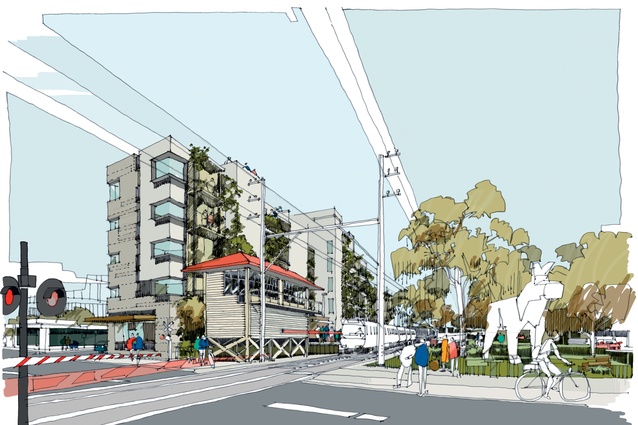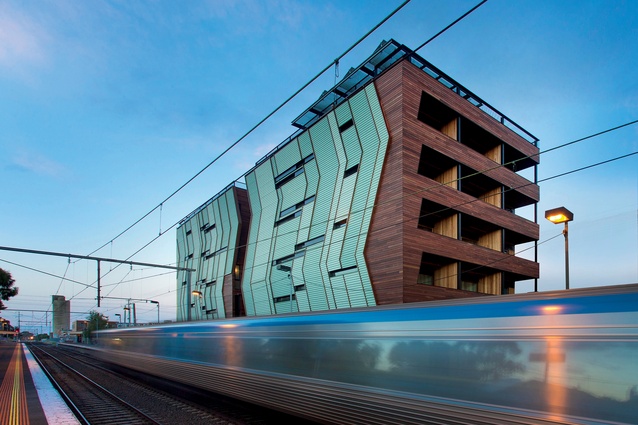The city of privilege
As urban house prices in New Zealand soar, are we in danger of building socially stratified, exclusive cities of privilege?
Research into collective urban housing by Mark Southcombe, senior lecturer at Victoria University of Wellington’s School of Architecture, suggests that there are proven international solutions which can help address the housing affordability crisis we are currently facing in this country.
Déjà vu all over again
New Zealand’s current housing crisis is reminiscent of the housing problems that occurred at the end of the Industrial Revolution. At that time, urban population growth created a huge housing deficit, which resulted in overcrowding and housing quality issues that endured long into the 20th century.
“The 19th century had shown that the private sector is an unreliable provider of decent housing for the urban poor,” stated Ben Schrader in We Call it Home: a history of state housing in New Zealand.1 Legislation empowered cities to embark on slum clearances towards eliminating substandard and overcrowded housing in places like Te Aro, in Wellington. Today’s household economic forces are similar to those that caused housing overcrowding and health problems historically.
Low wages combine with the costs of rent and travel for work to effectively remove housing choices. When people can’t access housing in close proximity to work and family, or afford the housing that is available – “this is not your fault or a choice”.2 While many upper- and middle-income earners argue that there is no poverty in New Zealand, the evidence is rising that we have a serious housing affordability problem: the average rent for a three-bedroomed house in Auckland now costs around 65 per cent of the average income, even though 30 per cent of income on all housing-related costs is considered the limit for housing affordability.
The term ‘affordability’ refers to the percentage of disposable income a household spends on all housing expenses. Affordable housing expenses in the EU averaged 23 per cent of household income; in Austria, 19.1 per cent; in the UK, 18.2 per cent.3 Even when houses are available in New Zealand, many people can’t afford to live in them without assistance and they either become homeless or are forced to be creative. Typically, their answer to the problem is to sublet parts of the house and crowd more people into it. More people share less space or sleep in a garage or their car as a means to balance their income and expenditure. The housing crisis is not just a housing supply problem: it’s a housing affordability problem.
The housing affordability problem
Today’s social housing is the ‘ambulance at the bottom of the cliff’ solution: housing for those at the fringes of society in greatest need, for as long as they have need4 – those who have low incomes and particular needs or circumstances, according to Philippa Howden-Chapman in Home Truths: Confronting New Zealand’s Housing Crisis.
“We think of them catering for the poor, the sick, the unemployed, the elderly and the alone,” stated Bill McKay and Andrea Stevens in Beyond the State: New Zealand State Houses from Modest to Modern.5 While the number of state houses is about the same as it was in 1991, the number of households in New Zealand has increased by about a third, resulting in proportionately less state housing provision.6
Today, this provision is necessarily targeted to those Housing New Zealand classifies as having ‘urgent’ or ‘serious’ housing needs. Social housing is also increasingly associated with social problems because of the grouping of the urgent and serious needs of those eligible. What is missing is the large lower-middle income demographic who are also unable to access affordable housing.
Missing lower-middle range of affordable housing
We have a generation of lower-middle income earners struggling for adequate housing access that no one seems to have noticed much because the focus has been on the lowest, most-urgent need. Labourers, service providers and professionals, such as nurses and teachers on moderate wages, are struggling to afford to live and commute in our major cities, especially Auckland – and many are leaving Auckland.
This problem particularly affects those without property and younger people who have recently entered the workforce, known as ‘Generation Rent’.7 Rents as a proportion of income are increasing and will continue to do so, as deemed necessary, in order to meet the capital returns required by banks and investors. Tenants receive the hangover from increasing housing values in the form of increased rental costs and decreasing disposable income.

Housing capital
Housing’s primary contemporary function in New Zealand is capital investment. Houses are homes for people to inhabit secondarily, after they are a financial asset. There is also a group of professional investors who make their income through trading on the housing market. The labour needed to accumulate the money required to purchase housing is, in many parts of New Zealand, beyond the point where ownership is practically accessible for working couples without inherited capital.
“When a lifetime of labour can no longer match the returns on an acquired fortune, inherited wealth once again becomes the defining factor of class distinction, reducing any notion of social mobility to a remote possibility at best,” stated Reinier de Graaff, in Architectural Review.8 This is a symptom of an increasing contemporary wealth inequality in New Zealand society and an increasing social divide.9 It is potentially also a symptom of a similar social division and disharmony to that reverberating throughout the other liberal economies of the Western world.
Ghost housing
At the same time as we have growing poverty, homelessness and overcrowding, we also have unoccupied ghost houses owned by people who live in several houses in different places or by property speculators anticipating rapid capital gains without the depreciation associated with rental occupation. There are also unused ghost sites land-banked for future super-profits or accumulated in the expectation of a major project and payday some future day. These property investors and developers exacerbate the scarcity of available land and housing, and push up its value by doing little over a long period of time.
Why the market won’t fix the problem
Market economics suggest that increasing affordable housing supply is the answer to the housing crisis. The rationale is that if we can create an oversupply of affordable homes, this will be followed by a market ‘correction’ and the problem will be solved. The market wisdom – sometimes explicitly stated by politicians – is that we don’t need architects and master builders: ‘cheap and faster builders are what’s needed’.
Amenity, build quality, site and floor areas of housing are all reduced in the name of affordability but, at the same time, profits on affordable and social housing are retained and maximised.10 While there is rhetoric about affordable housing quality and provision from many developers, in reality what they do does not stand the test of truly affordable housing at all. At best, it typically provides a minimum token amount of affordable housing that is mostly just a few houses smaller than the rest of the development. The underlying problem is that the developers don’t want their development – and associated profits – contaminated by the perception of cheap housing.
Our current dominant affordable housing delivery processes are inherently flawed with no comprehension of the paradox intrinsic in commercial housing affordability.11 Architects, builders and developers are complicit in this process and are losing credibility as a result.12 Rosemary McLeod, writing in The Dominion Post, gives an indication of the mainstream view of the housing delivery process that currently exists in New Zealand: “Cannabis decriminalisation would turn the nation’s profitable cottage industry into yet another racket for white-collar shysters, and they are flat out already speculating in housing.”13
Despite rising demand for affordable housing, there is little or no profit to be made from it, and there is significant extra effort required to achieve less profit. Private property developers acting alone are not attracted to building affordable housing, nor has there been financial backing for them to do so.14 Today, only five per cent of ‘new homes’ are priced in the lowest quartile and 60 per cent of new homes are priced in the upper quartile.15 New housing supply in New Zealand is dominated by speculators and developers, particularly the large design-and-build companies that monopolise land supply for larger housing developments and associated profits. Land cost has been the major component of the increase in housing costs since 1997.16
Supply, productivity and profit
The idea that demand will drive affordable housing supply conveniently ignores the inherent contradiction between ‘affordability’ and ‘supply and demand’ in a market where there is ‘short supply’. “Speculative houses are not principally designed as houses to be lived in, but rather as financial assets to be sold or rented. In a market where developers do not have to compete in terms of quality, the effect of this can be huge,”17 stated the authors of A Right to Build. The market seeks not to make housing more affordable; it seeks to make housing as much profit as possible within the parameters of so-called affordability; to minimise costs while maximising the acceptable sale price or rental.
Last year, during a Block Lecture for the Auckland branch of the NZIA, Simon Wilson called for architects to find the Holy Grail of housing that is ‘scalable and cool’ to address housing problems. And we have succeeded spectacularly in doing this at various times.18 As anyone involved in PrefabNZ knows, there is a huge amount of innovation happening in the prefabricated housing area right now, which is already filtering through to homeowners.
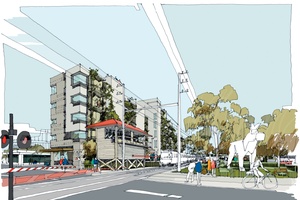
As in the past, this really can deliver results that help to address the challenge and will probably be most effective within highly-refined, mid-rise apartment typologies and medium-density housing systems. However, this innovation and efficiency is unlikely to be translated into more economic housing. As many architects working for developer clients will recognise, hard-won architectural efficiencies do not often translate to lower owner purchase prices or lower tenant leases. With developer-based housing delivery systems, efficiencies gained are applied to maintain developer profits and increase them. “This is not a business failure, but a business success,” suggest the authors of A Right to Build.19
Housing all Kiwis
The Government’s social housing programmes once set the standard of design and construction for New Zealand housing for the “working man and his family”.20 They also aspired to make housing accessible and available for all. New Zealand was a world leader in the facilitation of Western government-supported housing programmes.21 These programmes ranged from the Government providing rental dwellings, state-provided affordable housing for sale and pathways to purchase housing, through to the sponsorship of private housing for lower-income workers by means of financial advances, as well as rental subsidies.
These historic New Zealand programmes arose from a context of housing scarcity, poor housing conditions and a lack of security of rental tenancy for low-income tenants – strikingly similar to what occurs today. Auckland’s tenant ‘churn’ or average tenancy length is currently 15 months.22 This compares with an average tenancy length of 2.7 years in the UK and minimum tenancy lengths of three years in Austria. In addition to serious housing for the most vulnerable, there is a huge latent housing need for lower-middle income earners.
A new hope
Health implications of overcrowding were the reason that slums were cleared in the past. The economic implications of the research findings that better housing temperatures improves public health23 resulted in a government subsidies programme for New Zealand social housing stock to have insulation retrofitted. This programme was so successful that it was extended this year to cover housing owned or occupied by lower-income earners. This rational addressing of a long-standing housing and health problem offers hope.
Health issues, such as respiratory and infectious disease problems, associated with our contemporary overcrowding are an emerging concern. The economic benefits to the health system from addressing these issues through increased affordable housing provision offers hope of a rational acceleration of new affordable housing supply for the most vulnerable.
There is no doubt that, like the retrofitting programme, government policy intervention will be needed – perhaps through a national affordable housing programme. This would create an environment in which large amounts of high-quality affordable housing can be constructed at cost on an ongoing basis. Housing is as fundamental to the continuing health of our society as is the provision of health and education public services.
Leadership to facilitate affordable housing
History tells us that the inability of the laissez-faire market to deliver affordable housing will be followed by increasing attempts to address the problems through central governmental policy intervention. There is a dawning realisation that affordable housing is a social need, not able to be addressed by the market in the same way that health care or education for lower-to-middle income earners is not readily provided by the market.
Landed gentry
Land is the most urgent problem and, so, availability and direct control of land and its use is the key to the solution. In Auckland, land value is up to 70 per cent of the cost of housing; thus it is 70 per cent of the problem – so it must also be the major part of affordable housing solutions. Ownership structures tie up land access. Scarcity of land drives up its value. Land-use planning and the limitations on possible land development restrict its potential to house people. In addition, owners in New Zealand enjoy relative freedom from housing planning obligations for the use of land compared to other countries. All of these things need to be addressed by taking land out of the affordable housing equation.
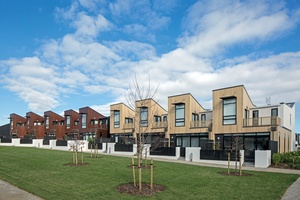
Alongside New Zealand’s history of dealing with housing scarcity, there is a diverse range of relevant international experience of medium-term affordable housing design, and delivery, which we need to embrace. Seven major affordable housing delivery tactics that would make a huge difference in New Zealand are summarised below.
1. Redevelop public land, retaining public land ownership
Redevelopment of major parcels of public land by developers typically upgrades or intensifies affordable housing provision on the land and mixes it with speculative housing provision, enabling private profits from public land to subsidise the cost of the affordable housing. While there are no financial inputs required in this housing delivery model, the gain in housing is at the expense of capitalisation of part of the existing land. This makes no sense from a medium-term affordable housing provision perspective because a greater amount of affordable housing provision is possible on that land if its ownership is retained.
If the value of the land is removed from the equation, then truly affordable housing becomes possible. It does not even make sense to sell the land asset from a medium-to-long-term financial management perspective. The cost of the housing on land in existing ownership is subsidised by the land equity and the income it produces. In the long term, the retained land value enables an ongoing legacy of affordable housing provision.
2. Community land trusts and not-for-profit land tenure
Land can be removed from the affordable housing equation through use of alternative long-term land tenure structures. Leasehold land tenure with long-term leases designed to facilitate housing access and provide long-term housing affordability is one example. This is a favoured means of addressing land scarcity issues in the Netherlands where significant tracts of leasehold land are held by local authorities. Increases in land values then benefit entire communities, influence over the use of land can be maintained, and speculation is moderated.
Privately owned land can be moved into collective ownership structures for long-term community benefit. Collective ownership structures, such as community land trusts, not-for-profit housing organisation ownership and cooperative ownership, are other ways to address this issue. These alternative types of land tenure originally emerged as a consequence of rapacious land profiteering in the 19th century – similar to what we are seeing today. It is no coincidence that the demographic excluded from access to home ownership today is favourably disposed towards shared models of land ownership and housing, as occurred in the past.
Addressing the speculative function of land allows collective development savings to be made and retained if it is held in common. Māori land has this character and its awesome potential is beginning to be realised in leading projects such as Ngāti Whātua’s Kāinga Tuatahi, Kupe Street, in Auckland, designed by Stevens Lawson Architects. In the medium and long term, when the land component of housing is retained by local and central government, community land trusts, not-for-profit organisations, and cooperatives, an ongoing legacy of housing affordability is able to be retained.
3. Build at scale through major housing delivery agreements
In the past this occurred through selection of development and construction companies as sole-source suppliers of bulk housing as a means to create economies of scale over time. As a response to postwar housing shortages in the 1950s, 500 low-cost, pre-cut houses were ordered from England and 500 from Austria for Titahi Bay in Wellington.24 It’s not hard to imagine that housing in the near future could be sourced from Sweden, China or Japan much like with our cars.

The Fletchers EQC repair contract in Christchurch and the more recent Hobsonville Land Company development are more recent local examples where a single company has taken responsibility for design, building and project delivery on a major scale. This strategy has the political advantage of discharging risk and responsibility to a few large-scale businesses that, given enough of a monopoly, will deliver volume housing and some savings. These will be realised through industrialised building processes, standardisation, and greater competition between consultants, contractors and supply chains.
A variation on this strategy is used in London and Vienna, where major affordable housing provision (300 houses plus) is awarded to teams of consultants and contractors through major public design-and-build competitions that balance built-environment design quality and cost. This strategy of delivery has great potential here, where it could bring affordable and social housing design into the public realm, delivering not only housing but also public discussion around the qualities of urban environment and housing design.
4. Mandatory provision of affordable housing
The European approach exemplified in London is relevant here, especially for Auckland. It seems somewhat remarkable and visionary, but in other countries affordable housing provision is mandated as a necessary part of all housing and development approvals. In London, housing and affordable housing needs are quantified as planning targets. The extent of the need is defined in the London Strategic Housing Assessment and City of London Housing Supplementary Planning Guide.25 The housing must also all meet strict minimum design requirements as defined in the London Housing Design Guide.26
Development appraisals and economic viability assessments are required to assess the maximum reasonable level of affordable housing able to be provided on each site. The extent of affordable housing and its mix of ownership, subsidised housing, and market housing may be negotiated as a part of a planning application. The overall volume of affordable housing provided in individual London developments varies, but consultants working in the field report that around 45 per cent of all housing constructed is social housing or subsidised affordable housing, regardless of the surrounding economic context.
Providing affordable housing within all housing projects is not negotiable. While it does slow the rate of approvals, it is now an accepted part of development planning in London. The application of this affordable housing policy framework ensures a broad base of socially sustainable affordable housing provision throughout the city. The effects of this requirement are addressed through design by developers and their architects. Less desirable housing aspects and siting within any project are typically allocated as affordable and higher-value parts of the sites or development to market housing. The two demographics will often enter a single site or building through separate access points.
5. Higher housing densities in key locations combined with good design and smart prefabrication
Maximising the potential of land to deliver high volume, high-quality affordable housing environments requires better utilisation of land. Planning problems in Auckland, exemplified by the Unitary Plan process and the ‘not-in-my-backyard’ demographic, need resolution. More ambitious, well-designed, high-density, large-scale housing precincts are needed near to transport infrastructure, as has already started to occur in New Lynn. This is achievable through more designated intensification areas.
Central government intervention in planning to create some high-density housing precincts is required in the absence of this occurring through the RMA. This does not necessarily mean high-rise apartments, although that should be part of the mix. Design-led development can create high-density, mid-rise environments, such as found in places like Copenhagen, London and Berlin.
The social housing ambitions of the Modern period proved that we can industrialise large-scale building processes and deliver high-density housing. With contemporary mixed-use, we can now create desirable high-density housing that operates like a small city within a city. In London, redeveloped mixed-use Modernist housing blocks – like the Brunswick Centre and the Barbican – are now highly sought-after living environments, particularly for their good localities, good bones and balanced communities.
6. Direct housing provision
Proven international ‘direct’ collective urban housing procurement can readily be adapted and facilitated in New Zealand. Alternative direct building delivery mechanisms share risk to facilitate a more efficient, economic, targeted, affordable and, in the long term, more responsive and resilient housing market. There is a range of co-housing cultures possible, from development oriented through to community focused.
In the article ‘Where is our Collective Imagination?’ published in Architecture New Zealand, Dominic Glamuzina and Aaron Patterson described the German Baugruppen co-housing movement.27 The Melbourne-based ‘Nightingale Model’ is another example. Bottom-up, collective, owner-procured projects save on marketing and development costs, making them significantly more affordable. “Cutting the developer, the profit margin and any marketing costs reduces the cost of an apartment in Berlin by 25 to 30 per cent” for higher-quality, more diverse apartments.28
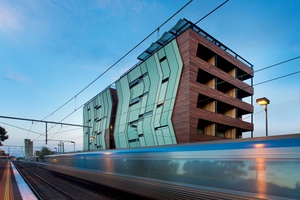
With contemporary virtual connectedness, new decision-making software and an emerging group of facilitation professionals, collective self-build or collective custom-build – as it is also known in some countries – is an increasingly viable means of housing delivery. And the good news for architects is that there are almost always architects involved as initiators or core members of collective building groups.
Direct procurement processes deliver higher-quality affordable housing, too. “While developer-driven apartments are usually designed for a notionally average user, the members of a building group are able to define their needs and incorporate these into the design process. The result is a home tailored to specific needs,” stated Andreas Ruby and Nathalie Janson in an article, ‘Listen’, published in Blueprint magazine.29
Collective housing groups also address, in a balanced 21st-century manner, the value of community and social connection in housing. They will often share some facilities – saving in duplication and providing access to a greater range of amenities for residents in a way that is broadly similar to what occurs within gated communities. The extent of common facilities varies from almost none to everything imaginable, as occurs in Berlin’s Spreefeld or Vienna’s Sargfabrik schemes. Cooperatives were originally established to address ongoing rental quality, tenure and financial issues with long-term fixed rentals that allow tenants to prosper over time.
Collective urban housing groups address social needs as well. This occurs through the formation of socially-cohesive communities. “The sense of community and belonging nurtured by self-developing is not only good for the residents, it’s good for the city.30
The social sustainability of cooperatives and building groups has real potential for shared social and affordable housing provision in New Zealand to the advantage of both parties. Collaboration between Housing New Zealand, or Local Authorities, and individual building groups would be required to help them secure land-use agreements. This could occur through agreements to lease a percentage of the housing within a building group. The trade-off for social housing management is access to the common spaces and the social management of the group.
7. Diversified housing provision
As a parallel strategy to concentrating housing provision through a few large supply sources, we can draw on our existing strengths and industry capacity as a country. We have a building industry made up of a great many small-to-medium-sized architects and builders that, together, are a huge collective resource. If land supply problems can be addressed and actively managed for intensification, that land can potentially be allocated as sites for affordable housing to a range of architects.
A huge new supply of housing can occur really quickly through such a process. Imagine the progress if 100 architects and 100 building teams were directly engaged in parallel to provide high numbers of medium-density affordable housing projects in the same timeframe. A huge amount of diverse, affordable, ‘at cost’ housing would result within the time cycle of a single building project. Our professional base in this country is already geared to work in this way. All it takes is recognition of its existence and, then, utilisation of this resource.
A similar strategy was employed in Vienna in 1923 to create 25,000 housing units in five years. It was so spectacularly successful that the units were completed in three years. Within 10 years, 60,000 housing units had been built – utilising more than 190 architects, stated Andreas Rumpfhuber and Michael Klein in their publication Modelling Vienna: Real fictions in social housing.31
Collective procurement also spreads the risk of large, single-supplier housing provision. While some might argue that this is inefficient, the counter-argument is that it is much more productive to utilise many small, lean administrative structures, as opposed to a few big, high-overhead ones.
Conclusion
As investors are pumping money into real estate, urban neighbourhoods are facing gentrification, and rents and land values are rising, excluding availability to much of the population. This makes affordable housing projects extremely difficult to build and maintain – but all the more necessary.32
All New Zealanders have a right to be housed, in the same way they have a right to education and health care. The current speculative function of housing needs to be controlled in the manner in which it is controlled in other Western countries; and this will inevitably involve more active management if we are to address the housing affordability problem.
We must also recognise that a growing percentage of our population will be renters for life, and this has impacts on the supply, quality, affordability and tenure of rental housing. Regulation of rentals, and affordable houses with covenants that require the owners to live in them are typical devices used in other countries to curb housing speculation. It’s likely we will see more of this sort of regulatory tactic here in the future, too.
In addition, greater tenant protection and increased minimum rental tenure agreements are common overseas as the means to protect tenant tenure in an environment where there is an increasing percentage of the population housed in rental accommodation.
Diversity of tenure is also a major requirement that we need to consider. Housing projects that only provide for affluent people, or disadvantaged people at the other end of the scale, result in socially stratified, exclusive cities of privilege. Many people can no longer afford to live in Auckland and they are moving away. The missing housing is not just for those with serious housing need: it is also for a full range of requirements in lower- and middle-income demographics, including families in our cities.
“Many of London’s most vivacious quarters combine a mix of dwelling sizes, housing type, income range, and tenure,” stated the authors of ‘Recommendations for living at Superdensity’ in Design for Homes.33 We need a similar-mixed social ambition for housing in our cities to ensure these will be socially sustainable in the medium to long term.
REFERENCES
1 We Call it Home: a history of state housing in New Zealand by Ben Schrader; Reed Publishing, 2005; p.29.
2 ‘10 ways the media can improve its reporting on struggling families’ by Jess Berentson-Shaw; The Blog, The Morgan Foundation: bit.ly/29RQ1Ls (accessed 7 July 2016).
3 Modelling Vienna; Real fictions in social housing by Andreas Rumpfhuber and Michael Klein; Verlag Turia + Kant, Vienna, 2015; p.221 (referencing
2006 figures).
4 Home Truths: Confronting New Zealand’s Housing Crisis by Philippa Howden-Chapman; Bridget Williams Books, Wellington, 2015; p.41.
5 Beyond the State: New Zealand State Houses from Modest to Modern by Bill McKay and Andrea Stevens; Penguin Books, Auckland, 2014; p.11.
6 Generation Rent by Shamubeel Eaqub and Selena Eaqub; Bridget Williams Books, Wellington, 2015; p.90.
7 As above.
8 ‘Architecture is now a tool of capital, complicit in a purpose antithetical to its social mission’ by Reinier De Graaff; Architectural Review, 24 April 2015: bit.ly/29D6Vwv
(accessed 24 June 2016).
9 Generation Rent by Shamubeel Eaqub and Selena Eaqub; Bridget Williams Books, Wellington, 2015; pp.67 and 68.
10 ‘Price Hike for “Affordable’ Homes’ by Belinda Feek; The New Zealand Herald, 5 May 2015: bit.ly/2a3P3rW (accessed 19 February 2016).
11 A Right to Build by Alistair Parvin, David Saxby, Cristina Cerulli and Christina Schneider; The University of Sheffield School of Architecture, 2011; p.26.
12 House builders recognise the problem. Mark Southcombe directed the question, “How many of you [builders] are currently involved in or interested in being involved in affordable housing?” to the NZ Master Builders conference during his presentation, ‘The affordable house of the future’, 4 July 2015, and confirmed that the overwhelming majority of builders have absolutely no interest or desire to be involved in affordable housing. See also ‘Architects are complicit in the commodification of UK housing’ by Giles Smith; Architectural Review, 27 January 2012: bit.ly/29u76pC (accessed 24 February 2016).
13 ‘The Meths don’t add up’ by Rosemary McLeod; The Dominion Post, Thursday 23 June 2016; p.A7.
14 Home Truths: Confronting New Zealand’s Housing Crisis by Philippa Howden-Chapman; Bridget Williams Books, Wellington, 2015; p.76.
15 As above.
16 Generation Rent by Shamubeel Eaqub and Selena Eaqub; Bridget Williams Books, Wellington, 2015; p.32.
17 A Right to Build by Alistair Parvin, David Saxby, Cristina Cerulli and Christina Schneider; The University of Sheffield School of Architecture, 2011; p.26.
18 Kiwi Prefab: Cottage to Cutting Edge by Pamela Bell and Mark Southcombe; Balasoglou Books, November 2012; p.50.
19 A Right to Build by Alistair Parvin, David Saxby, Cristina Cerulli and Christina Schneider; The University of Sheffield School of Architecture, 2011; p.26.
20 Beyond the State: New Zealand State Houses from Modest to Modern by Bill McKay and Andrea Stevens; Penguin Books, Auckland, 2014; p.11.
21 We Call it Home: a history of state housing in New Zealand by Ben Schrader; Reed Publishing, 2005; p.24
22 Exploring Security of Tenure through Co-Design by Auckland Co-Design Lab, MBIE and Auckland Council: bit.ly/29wSK7s (accessed 30 June 2016).
23 ‘Retrofitting houses with insulation to reduce health inequalities: results of a clustered, randomised trial in community settings’ by P Howden-Chapman, A Matheson, J Crane, H Viggers, M Cunningham, T Blakely, C Cunningham, A Woodward, K Saville-Smith, D O’Dea, M Kennedy, M Baker, N Waipara, R Chapman and G Davie; British Medical Journal, 2007; pp.334, 460-464.
24 Kiwi Prefab: Cottage to Cutting Edge by Pamela Bell and Mark Southcombe; Balasoglou Books, November 2012; pp.52 and 53.
25 London Strategic Housing Assessment and City of London Housing Supplementary Planning Guide, March 2016; Greater London Authority: bit.ly/29L8RS7 (accessed
29 June 2016).
26 London Housing Design Guide, Interim Edition, by Design for London, August 2010; published by Greater London Authority: bit.ly/29u9ZXD (accessed
29 June 2016).
27 ‘Where is our Collective Imagination?’ by Dominic Glamuzina and Aaron Patterson; Architecture New Zealand, issue 06.2014; p.33: bit.ly/1TCzjhP. Also, ‘Listen’ by Andreas Ruby and Nathalie Janson; Blueprint, issue 332, Jan/Feb 2014; p.17: designcurial.com/news/listen-4177615 (accessed 12 July 2016).
28 As above.
29 ‘Listen’ by Andreas Ruby and Nathalie Janson; Blueprint, issue 332, Jan/Feb 2014; p.17: designcurial.com/news/listen-4177615 (accessed 12 July 2016).
30 As above.
31 Modelling Vienna: Real fictions in social housing by Andreas Rumpfhuber and Michael Klein; Verlag Turia + Kant, Vienna, 2015; p.99.
32 Cohousing Cultures by Michael LaFond; Jovis Verlag GmbH Berlin, 2012; p.183.
33 ‘Recommendations for living at Superdensity’ by HTA, Levitt Bernstein, PRP and Pollard Thomas Edwards Architects; Design for Homes, London; p.10: designforhomes.org/recommendations-for-living-at-superdensity



